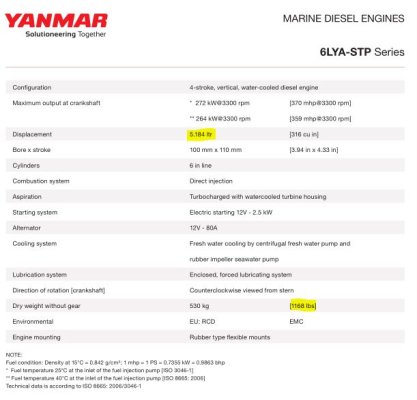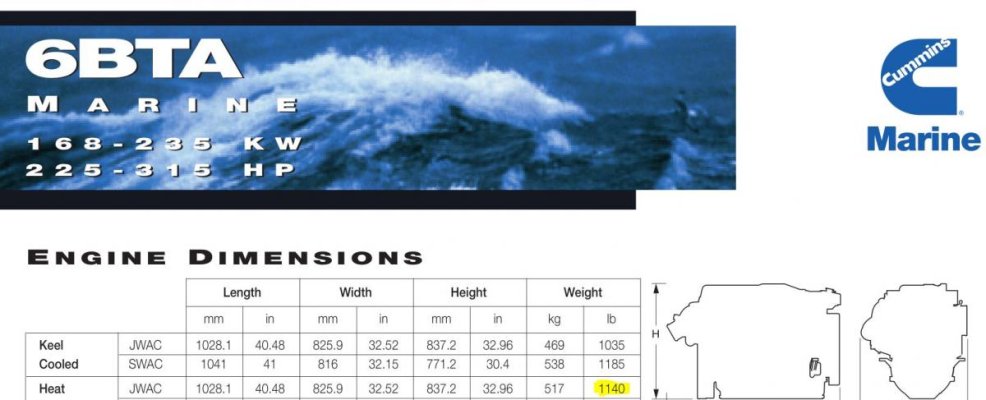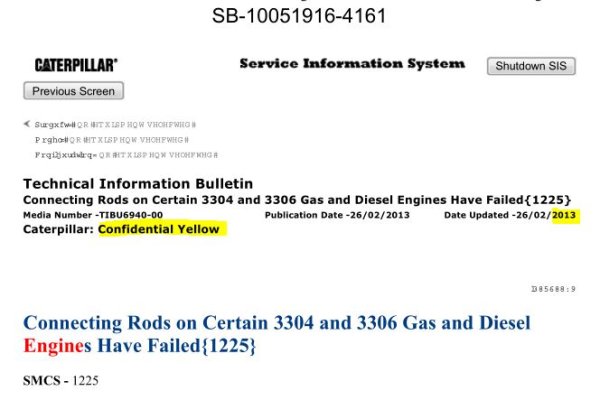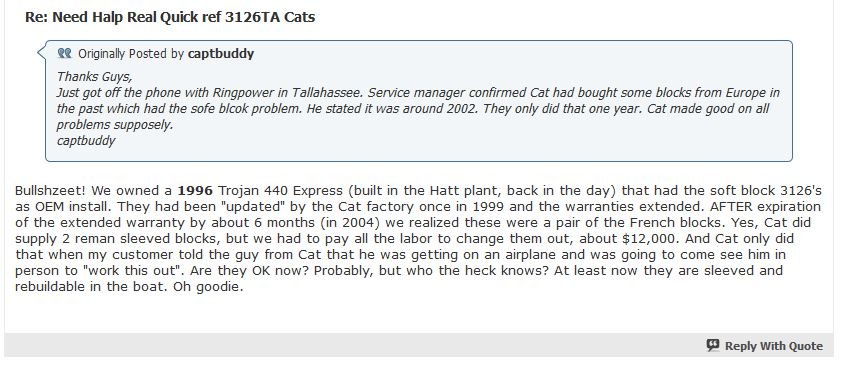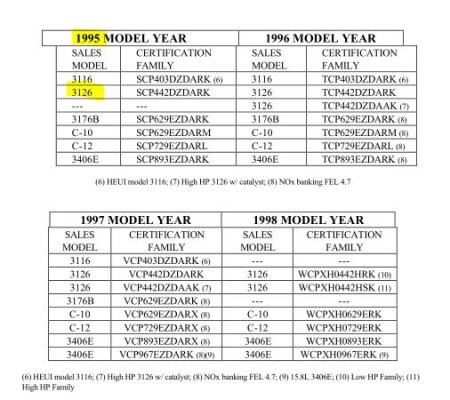Delfin
Grand Vizier
- Joined
- Jan 20, 2010
- Messages
- 3,821
Never heard this before, so I checked...and it's apparently an urban myth (what we used to call an 'old wives' tale).
1) The 5.1 litre Yanmar 370hp 6LYA in our MS390 weighs 1,168 lbs. The 5.9 litre Cummins 370hp 6BTA "Diamond" engines in our 4788 weigh 1,140lbs.
So, since the Yanmar is actually a smaller displacement engine than the Cummins, and the Yanmar is actually --heavier-- therefore one should presume beefier construction on a "lbs-per-displacement" basis. These engines are virtually identical (with a slight edge to Yanmar) on a 'lbs-per-horsepower' basis. In any case, I don't think either of these is valid basis to trash an engine for 'theoretical longevity', but in any case, the notion of a "much lighter weight" Yanmar" is totally false.
2) The 5.1 litre 6LYA is rated for 370hp at 3,3000, the 5.9 litre Cummins is rated for 370hp at 3,000 rpm. Two takeaways here -- first, the rpm difference is nearly meaningless. Second, as we've learned over the last 40 years, smaller displacement engines running at faster RPMs to achieve similar horsepower result in --greater-- reliability, because they develop less torque for any given horsepower. This reduces the load on bearings, piston rings and everything else in the engine. Combine this with the incredible advances in engine oils, metal alloys and precision machining and it's easy to see why new, faster-spinning engines are more reliable, not less.
Sorry...I don't mean to contradict so flatly, but if we are going to trash a particular brand of engine, I expect we all want to get our facts straight first.
I own both the Yanmar and the Cummins. Both great engines. Slightly less troubles with the Yanmar...
I don't think I was trashing Yanmar. My comment was based on the fact that what was referred to by the salesman as the preferred engine was a CAT 3216, and the title of the thread was a comparison between that CAT and a Yanmar. The 3126 marine engine weighs just over 1800# and produces 250 HP at 2400 rpm. https://www.google.com/search?q=cat+3126+specs&oq=cat+3126+specs&aqs=chrome..69i57j69i60j69i61j0l3.25269j0j4&client=ms-android-google&sourceid=chrome-mobile&ie=UTF-8#imgrc=sWP5ZS3EN0RThM:
The Yanmar 6Lya marine engine weighs a lot less, turns faster and produces more HP, so my expectation is that it would not last as long as the CAT, all other factors being equal. Perhaps that is what the salesman meant.

